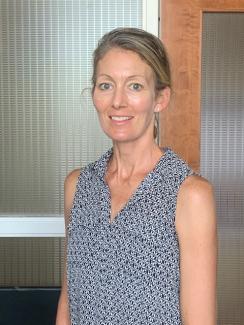From Healthy People 2020 Stories from the Field, a series highlighting communities across the Nation that are addressing the Leading Health Indicators (LHIs).
Rural communities face unique challenges when it comes to accessing healthy foods. Rates of obesity in both children and adults are significantly higher in rural locations than in urban locations, and people who live in rural areas eat fewer fruits and vegetables than those who live in cities.
In 2016, the North Carolina state legislature passed a bill that allocates $250,000 each year to improving healthy food access in rural food deserts through the Healthy Food Small Retailer Program (HFSRP). Administered by the North Carolina Department of Agriculture & Consumer Services, the HFSRP reimburses small stores for equipment purchased to display and sell healthy foods. Many retailers have used this program to purchase refrigeration so they’re able to display nutritious options, like pre-made salads, fruit cups, and frozen produce.
Creating a Focus on Health Outcomes
Dr. Stephanie Jilcott Pitts and her research team at East Carolina University (ECU) soon became interested in learning how the program was affecting dietary choices in participating communities. They received funding from the ECU Brody Brothers Endowment and, later, the Robert Wood Johnson Foundation’s Policies for Action Program to study the public health impact of the North Carolina HFSRP.
Jilcott Pitts and her team are doing a deep dive into the program’s impact on healthy eating in North Carolina food deserts by comparing participating and non-participating stores’ food environments and consumer purchasing habits. Each spring, the team does an in-store observation of food options, checks the bags of 20 to 30 customers in each store, and conducts a non-invasive “veggie-meter” scan to measure carotenoids — a sign of high fruit and vegetable consumption — in customer’s skin.
Success by the numbers
To date, Jilcott Pitts and her team have collected some very encouraging data on the HFSRP:
- Healthy Food Supply scores increased by 3.13 points in participating stores and decreased by 0.44 points in non-participating stores. This means healthy options were significantly more affordable, available, and of higher quality and greater variety in HFSRP stores.
- Customers in HFSRP stores had increased access to lower-fat milk, whole grains, and fresh, frozen, and canned fruits and vegetables.
Communities Coming Together to Encourage Healthier Choices
During the first 3 years of the study, Jilcott Pitts conducted a number of in-depth interviews with store owners who participate in the HFSRP. She found that these small retailers really take pride in improving the quality of products they provide to their neighbors, especially young people. “They’re so glad to be able to offer healthier options to kids,” she says.
Jilcott Pitts also emphasizes that the HFSRP has led to an increase in community partnerships and collaboration — local health departments, farms, and farmers markets all want in on the action. For example, one store owner works with her local health department to host taste tests and health fairs in her community.
Community members have expressed their enthusiasm for the HFSRP, as well — which Jilcott Pitts says makes a lot of sense. “They’re 20 miles from the nearest Walmart, and this program allows them much easier access to healthy options.”
Looking Ahead
At this point, the future of the HFSRP is unknown — the North Carolina legislature is set to decide whether or not to continue the initiative in the coming year. Meanwhile, Jilcott Pitts and her research team are gearing up to analyze data from the third year of their study and prepare to collect additional data next spring.
Jilcott Pitts says she has high hopes for what the next chapter will bring for the HFSRP, and she’s looking forward to seeing the mutually beneficial partnerships continue to cause change in these communities. “They’re a special group of people,” she says of the store owners participating in the HFSRP. “They’re trying to do business and help their communities.”




